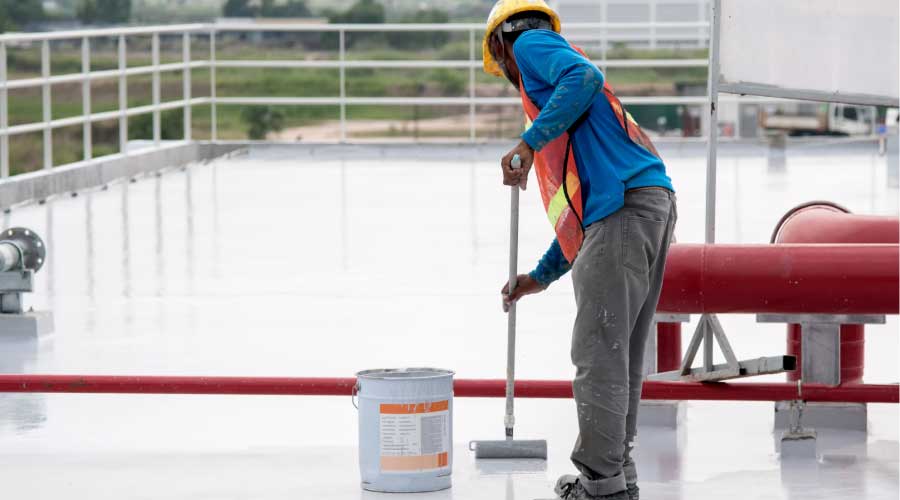Roof Coatings: Advanced Formulations Improve Durability
First, though, manufacturers need to dispel myths and fill information gaps among some customers.
For example, manufacturers say they are working to clear up the misconception of coatings as temporary measures to address roof leaks.
"Customers will say, 'I don't want a Band-Aid on my roof,'" LaBruzzo says. "The myth is roof coatings don't last, and they don't solve customers' water leaks."
Manufacturers point out formulation changes for coatings in recent years that have extended the performance lives of many products. But they know coatings have their limitations.
"There is no miracle in a bucket that will make a roof that is in disrepair perform well," Baumann says. "To ensure a roof coating delivers the expected performance, energy savings and life-cycle extension, managers and roofing contractors first must make sure the existing roofing system is sound."
Green Benefits
Once managers have access to accurate information, manufacturers believe they will be able to make smarter choices, both for their organizations' bottom lines and for the environment.
"Elastomeric acrylic roof coatings offer a variety of benefits when it comes to sustainability, from life-cycle extension to improved energy efficiency and a strong bottom-line ROI," Baumann says, referring to return on investment. "They eliminate the need for tear-offs, reducing landfill waste. They are easy to apply and maintain, reducing labor costs.
"They reduce cooling loads, along with the associated energy costs and greenhouse gas emissions. Incentives being offered by federal, state and local governments and utilities make the ROI even more attractive."
Manufacturers say that perhaps the strongest evidence they have in making the case for roof coatings and sustainability are the cooling benefits of white, light-colored and reflective coatings.
"White coatings cool the building considerably," Davis says. "They can significantly lower the cooling load and reduce the stress on the building." He points out a warehouse in Seattle that applied a white coating to its black roof. The customer was pleased with the result because occupants no longer had to open doors to cool the interior, and the company did not have to pay to bring in additional cooling capacity.
Roof coatings also can affect the amount of materials going into landfills.
"There is no tear-off," Davis says. "They can leave it on, and they've saved on all that junk that used to go into landfills."
Finally, many coatings have few, if any, volatile organic compounds.
"There is no reason to put a coating with solvents on a roof today," Davis says.
Manufacturers also know that today's customers often need hard data to make the case within their organizations to justify the cost of applying a roof coating. So more manufacturers offer software and other resources to quantify the potential savings.
For example, LaBruzzo says his company offers software based on standards and data from ASTM and the U.S. Department of Energy. The model considers a building's windows — both type and number — insulation, HVAC systems, building type — health care, education, commercial office, etc. — and utility rates.
Related Topics:














